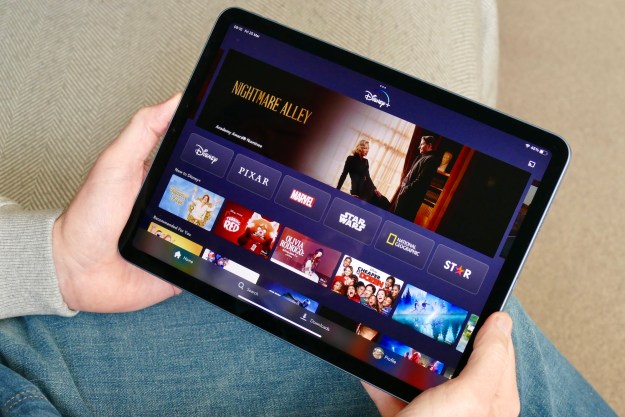
If you don’t remember Intel’s OnCue system, there’s good reason. The over-the-top device that promised to combine succinct TV programming, apps, and mobile delivery to create “the best Internet television service ever” was shelved by Intel, and sold to Verizon before it ever hit the market. Now the man behind OnCue, Erik Huggers, is leaving his surrogate parent company after only five months, signaling more uncertainty for the service’s lofty goals.
In an interview with Reuters on Friday, Huggers had kind words for his short-term employer, saying he had no issues with management at Verizon, and implicitly promising the OnCue system will continue to be developed in one form or another. “The technology is great, the team is great, the future is secure, the dream lives on. It’s time to hand the baby over to someone else,” Huggers said.
Still, while Verizon representatives also told Reuters that the company would “strategically utilize the OnCue technology and talent going forward,” Huggers’ departure after such little time to redeploy his “baby” doesn’t bode well for the system’s future as it was originally designed. Verizon has reportedly made plans to integrate at least some of the technology from the system into further expansion of its FiOS fiber optic TV service, but just how much of the original system will be left remains in doubt.
Before dumping OnCue for between $200-500 million in January, Intel’s new system looked to many like an innovative alternative to the bloated TV packages and bundles offered by satellite and cable providers. Offering a streamlined service for live TV and streaming over any Internet connection, OnCue was believed to be a potential roadmap for the future of TV, especially appealing to younger viewers, and the cord-cutter set.
However, while OnCue boxes were already being beta tested in Intel employee homes in late 2013, Intel CEO Brian Krzanich mysteriously shuttered the service and put up a “for sale” sign.
The reasons for Intel’s ejection just before liftoff are still unknown. At the time of the sale, many speculated that Intel was having trouble securing licensing deals from content providers, who in turn were ostensibly reticent to upset their relationships with cable and satellite providers by backing a more nimble competitor from outside the inner circle. In other words, OnCue would upset the status quo, and massive cable and satellite providers pressured content providers to stay away.
But a recent report by Multi-channel News disputes those claims, outlining less foreboding reasons for OnCue’s implosion. The report claims that sources familiar with the matter said Intel had no trouble inking distribution deals, but gave up its plans for the service over fears that the chip designer would be unable to reach “milestones and other commitments” required by those deals.
Content providers demand big distribution, and Intel’s lack of experience or a ready customer base seems to have put the company in a weakened position – it’s not easy learning to surf amongst the big waves of the pay-TV industry.
And while large service providers like Dish Network, DirecTV, and Comcast are all reportedly working on their own form of OTT video distribution, those services will no doubt be friendly to the current TV paradigm, requiring some sort of status quo subscription for access. For now, the future of Internet TV is opaque at best.
As for Huggers, the former BBC exec and OnCue mastermind will likely be weighing his options elsewhere in the ever-evolving industry he’s helped to shape. Wherever he ends up may well have a notable impact on the future of digital media, so we will continue to follow this story as it develops.


